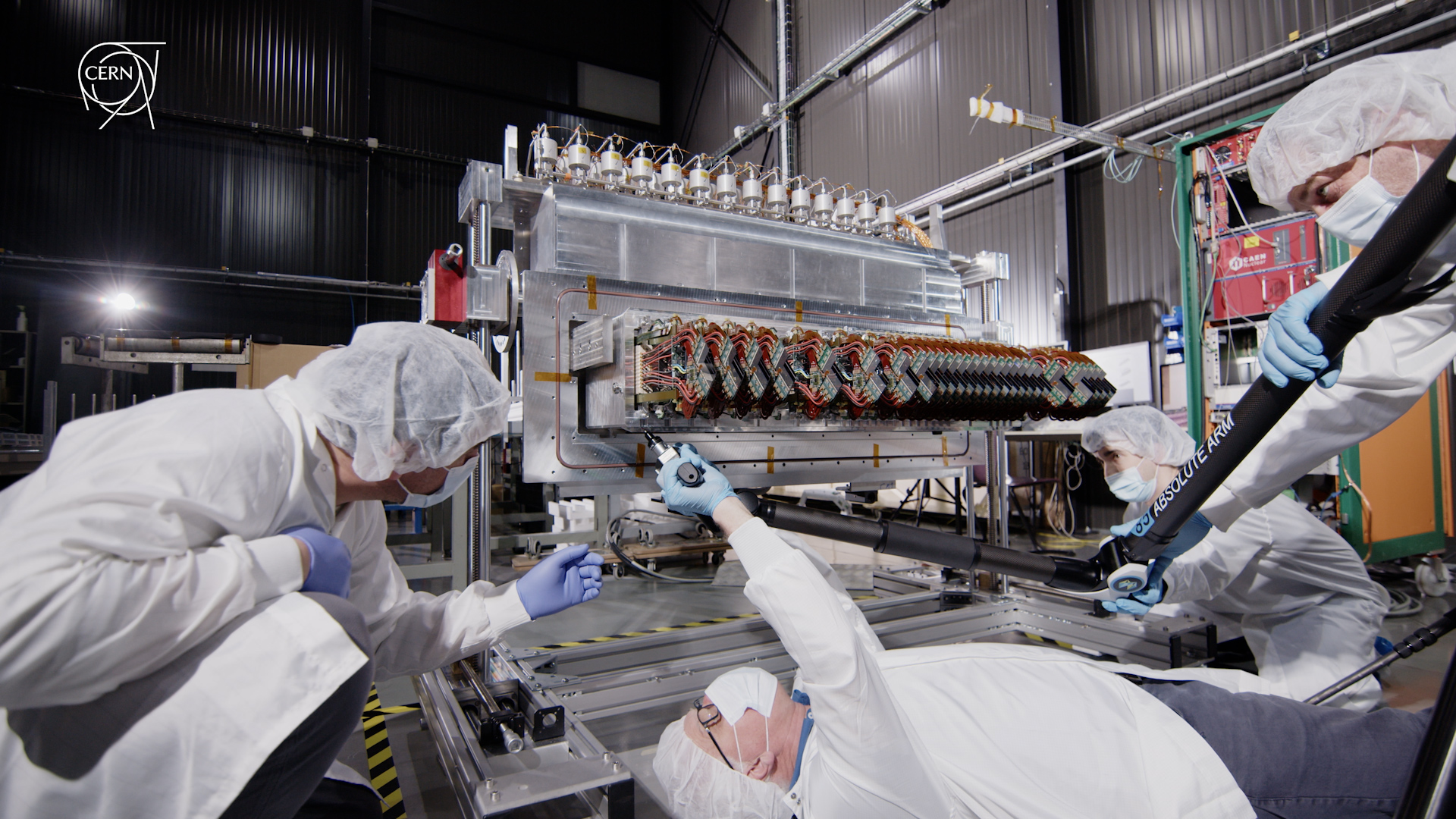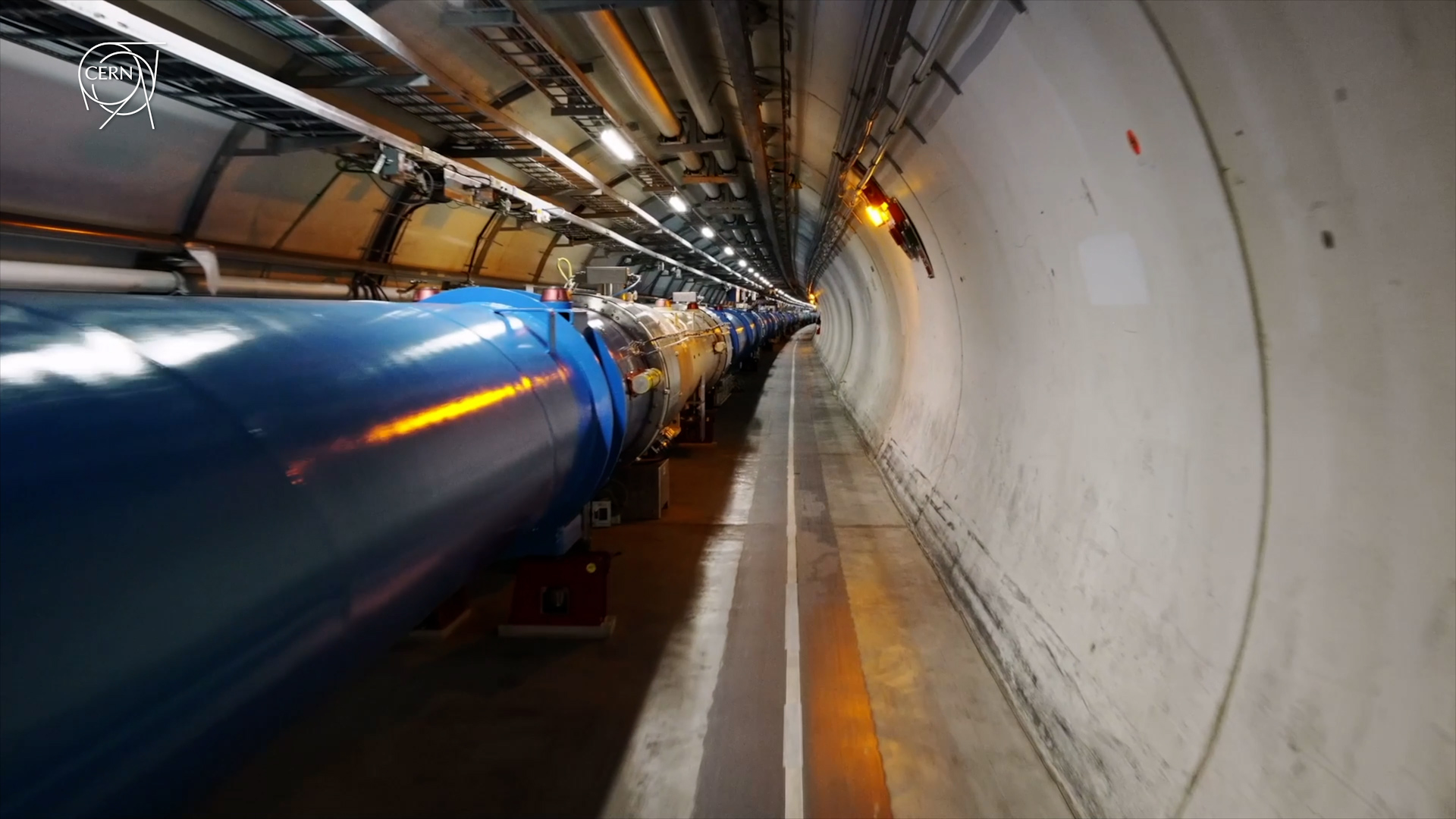19:32

Deep below the picturesque French village of Ferney-Voltaire, scientists are smashing subatomic particles together, in a bid to solve one of the universe's biggest and oldest mysteries.
The ferocious collisions are taking place in the 27-kilometer ring of superconducting magnets known as the Large Hadron Collider (LHC), overseen by a collaboration of researchers from the European Organization for Nuclear Research (CERN) and scores of other institutions around the world.
RAZOR's Neil Cairns has spoken to the scientists behind one of CERN's latest projects, known as 'the beauty experiment' – named after one part of rare particles created by the collisions.
"It's the equivalent of taking two apples, giving them a lot of energy and making them collide. And after the collision, we get pineapples, tigers, elephants, all kinds of new things," says Violaine Bellee, a data analyst at the LHCb experiment.
The particles formed by these collisions are things that wouldn't normally be seen on Earth.
It's hoped that studying the creation and decay of these particles will help scientists understand more about the differences between matter and its mirror opposite – antimatter – and explain why antimatter has mostly disappeared from our universe.
Quarks and their quirks
One particle that particularly interests Bellee and her coworkers is the B-meson.
To understand this subatomic enigma, you need to zero in on the fundamental building blocks of matter: quarks.
Quarks are the basic components of protons and neutrons. Protons and neutrons are each made up of three quarks.
There are six different types of quarks, including one known as the 'beauty' quark.
A meson is another type of particle, made up of a regular quark and an antimatter quark.
If one of the quarks in the meson is a 'beauty' quark, that makes it a B-meson.
But B-mesons are essentially extinct. They haven't been around since the Big Bang.
So the scientists at the LHCb experiment are bringing them back from the dead.
The proton collisions in the LHC's tunnels take place at 99.9999991 percent the speed of light, creating enough energy to produce B-mesons that last for a millionth of a millionth of a second.
These B-mesons are made with both matter quarks and antimatter quarks, which lets researchers study how antimatter may differ from matter.

A section of the Large Hadron Collider at CERN. /CGTN
A section of the Large Hadron Collider at CERN. /CGTN
Why antimatter matters
When the universe was created, matter and antimatter were created in equal amounts.
The remnants of the explosive reactions between matter and antimatter helped shaped the universe today.
But matter underpins the very fabric of our reality. Everything we can see, touch and perceive is made up of matter.
"Something has happened to tip the balance in favor of matter. Something about matter or antimatter that makes it that little bit different. And that difference, that's what we don't understand. That is what we really want to find out in our experiments,” says Tara Shears, a physicist and leading scientist at CERN who is involved with the LHCb experiment.
But what use does antimatter have in our world?
Shears says it doesn't just hold the key to the universe – but for certain kinds of medical treatment too.
"I bet not many people know this but medical scanners, PET scanners that are used to detect tumors for cancer, but also to study the flow of your blood around your circulatory system, these rely on antimatter. When you go for a PET scan, you drink a tracer. That tracer contains a radioactive isotope that emits antimatter electrons inside you when it decays," says the physicist.
"Don't worry, the amounts are really tiny. It doesn't do you any damage whatsoever. But what happens is that when these antimatter electrons get inside you, they get sucked up preferentially where you have more metabolic activity, like a tumor. And that's where they annihilate with the electrons in your body. And that can be imaged by the PET scanner, allowing doctors to pinpoint exactly where your tumor or where anything else is," she adds.
"Antimatter is key to that whole thing.”
